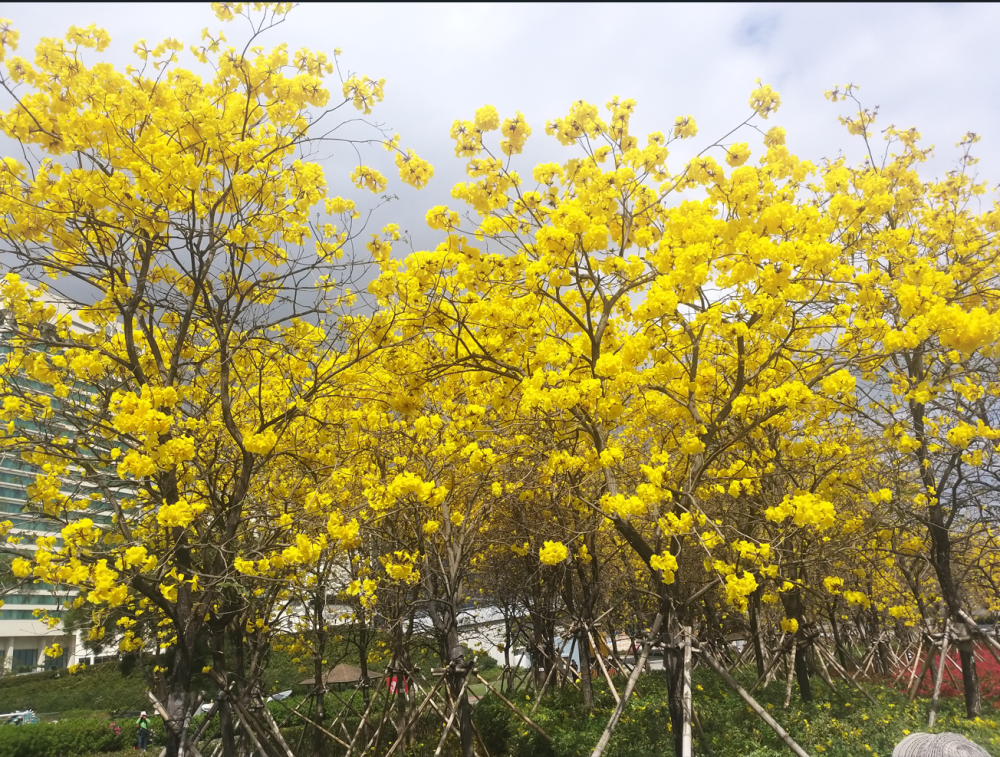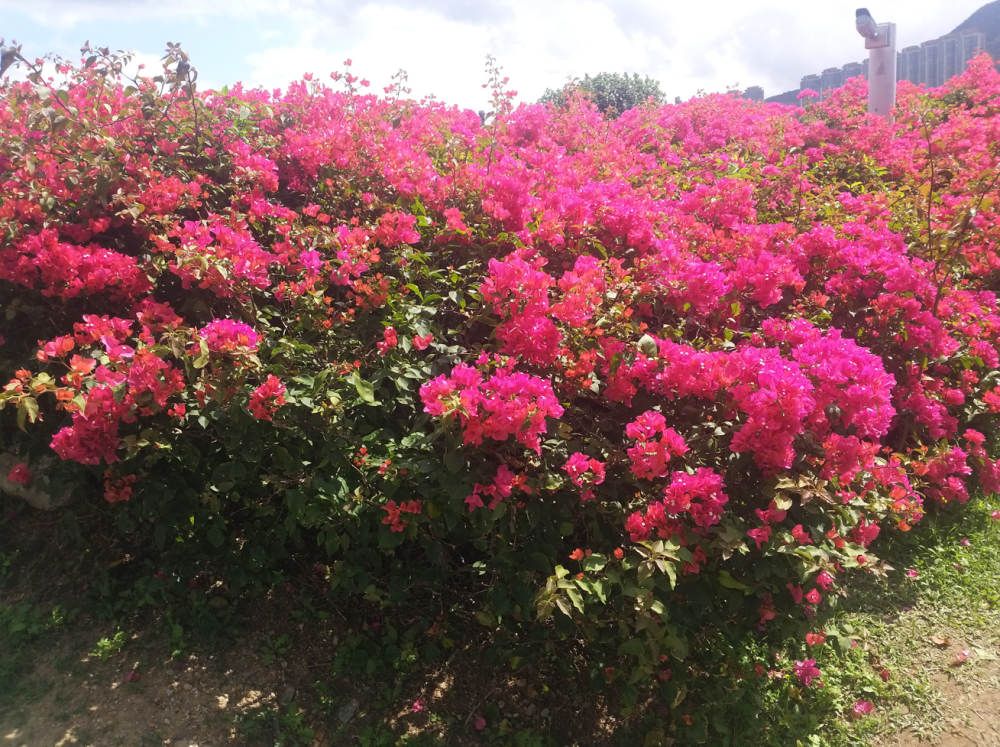Leaderboard
Popular Content
Showing content with the highest reputation on 08/01/2025 in all areas
-
This is the third and final movement of my Piano Sonata no.3 in C-sharp minor. It’s probably the most perplexing movement of music I have ever composed. For me it’s a struggle between Beethovenian heaviness (Es muss sein!) v.s. Unbearable lightness of blues (trying to imitate the style). Even though the first and second movement of the same Sonata has been commented as “random” before, I believe this one the most random of all haha. I once challenged myself whether to keep the eclecticism of the movement or not, but decided to leave it unchanged since all the styles were what I was thinking of and feeling at the moment. Here are the previous movements posted on YC before: 1st mov: 2nd mov: Piano Sonata no.3 in C-sharp minor 3rd mov.pdf The structure of the movement is a bit weird for me. It’s in Sonata form but the exposition and recapitulation never leave tonic key C-sharp minor at all, as the contrast of the 1st and 2nd subject is not achieved by key, but by style. In fact I only realized I was going for a Sonata form only when I almost finished the development section. Here is the structure of the movement: 0:00 Exposition, 1st Subject, 1st Theme: The falling fourth motive attacks immediately at the start of the movement in a passionate fashion, reminding himself of the pain he suffered after the more serene 2nd mov. It cools down in 0:31 and even keeps denying (or rather me denying my own sadness) by German sixth harmonic progressions, instead of normal dominant-tonic progression. 0:59 Exposition, 1st Subject, 2nd Theme: A deliberately repressed theme consisting of the inversion of a fourth, i.e. fifth, later gets more agitated with the Chopin Revolutionary Etude like L.H. accompaniment. It keeps on boiling until reaching the transition. I got crazy there thus I wanna try escaping… 2:28 Exposition, 2nd Subject: This section is made of 12 bar blues elements, thx to Arjuna’s @expert21 suggestion, although I already originally wanted some nihilistic jazz elements to contrast with the heavier 1st Subject. The pattern is repeated thrice, first just the “accompaniment”, then with the falling fourth motive theme added, and lastly an “electric-guitar-like” melody thx to of course my buddy Vince @Thatguy v2.0, as I won’t ever try to write something in jazz without his piano preludes. The locrian melody of course is a quotation from the 2nd mov opening! 3:46 Development, 1st Part: The opening falling fourth motive attacks again and modulates to keys I didn’t where it would go when composing lol, and finally reaches C# Locrian which confuses even me! It ends with a bridge of the locrian in L.H. quoting a little of the blues theme to the next part. 4:48 Development, 2nd Part: This part first develops the 2nd theme of 1st subject, then ends in confusion again. Suddenly a new theme emerges in the distant E-flat major and repeats again in relative major E major in a more passionate manner, until it boils down to a marvellously passionate retransition in 6:39 which I believe is the most beautiful section of the entire movement. It’s by composing this passage that I knew my creative power had finally come back. The passage ends in a desolation which leads back to the recap. 7:17 Recapitulation, 1st Subject, 1st part: A weird section. I finally could not refuse to admit my sadness by having a normal dominant-tonic progression, but still tried to escape by quoting the reminiscence of the blues themes like in a film montage jump cut in a Godard style (or, Stravinskian juxtaposition). 8:40 Recapitulation, 1st Subject, 2nd part: The 2nd theme of the expo 1st subject reappears in the L.H., and then a beautiful variation which I was probably laughing at myself for my weakness. The music goes on and gets more agitated until going to the 2nd subject. 9:32 Recapitulation, 2nd Subject: The previous “light-hearted” blues theme is transformed to an enraged Rachmanioffian roar. It subsequently cools down and tries to go for hope in the coda. 10:18 Coda, 1st Part: I tried to find peace by quoting the beautiful theme in the development plus 2nd mov’s 1st theme in counterpoint, repeat twice, 1st time in major and 2nd time pentatonic. The Locrian theme in the exposition is then transformed to a pentatonic plus the blue note of flattened sixth, signifying my attempt to find peace… 11:16 Coda, 2nd Part: However it’s futile. I realized that my sadness could not be “transcended”, at least not here, and finally realized my pain. The heavy falling fourth motive keeps attacking, and finally I was able to make a simple dominant-tonic chord progression to admit my pain, when the question is laid unanswered from the beginning of the entire sonata. The movement and the whole Sonata ended in utter desolation, as I had no energy anymore to fight as in the 1st mov and 2rd mov, nor create an imaginary utopia for myself as in 2nd mov and 3rd mov… The movement was primarily composed from Dec 2024 to Jan 2025, under a state of depression and confusion, due to what I had suffered in my full time job. I struggled a lot whether I should have a happy or sad ending for the whole sonata, but my mind gave me the answer. I could not pretend to be happy or hopeful at that time by forcing a meaningless Picardy-3rd at the end as in many of the Romantic Sonatas or pieces. I had to admit my sadness then. Paradoxically by doing that, I left all the negatives here so I had the 200% positiveness for my Sextet, which is my best piece and probably the most optimistic piece I ever composed. I tried my best at playing the movement already despite some slips haha. Hope you enjoy the movement and even go back to the 1st movement to listen to the whole Sonata! Thank you for listening,and possibly reading through this and commenting!!!!! Btw, here's Vince Preludes which inspire me: Prelude no.7: Prelude no.9: Prelude no.3: Henry1 point
-
This is the fourth and final movement of my Violin Sonata in B flat major, commissioned by and dedicated to Arjuna Clark (lately Archie) @expert21. This movement is in Variation form which is my first attempt on the form in a movement, though I already use quite some variations techniques in my old pieces. I choose the form because rather than another narrative sonata form movement, a variation movement exploring the possiblities of the ARJUNA motive is much more appropriate for me. Again, thx to @Thatguy v2.0 for making the audio. I try for some strict procedure in each of the variation, as I use Prime and Inversion form of the ARJUNA motive for the 1st half of a variation, then Retrograde, Retrograde-Inversion and Prime form of the ARJUNA motive for the 2nd half of a variation. Even though the motive itself is short and easy enough to achieve this kind of treatment, still I wanna use them for coherence. Because of this, this one is probably the hardest movement in this Sonata to write with. Here is the YT video and pdf scores of the movement: Violin Sonata in B-flat major 4th mov.pdf Here is the structure of the movement: 0:00 Thema: Allegretto Commodo. A rather simple and easy-going theme for later variations. 1:16 Variation I: Allegretto con moto: A funny variation. Introduces G-flat major for the 1st time in the movement. In the second half, each two bar phrase is the retrograde of the two bar phrase corresonding to the first half, e.g. b.26-27 correspond to b.17-18. 2:13 Variation II: Allegro con energico. A variation heavily inspired by the 2nd movement of Beethoven's Razumovsky Quartet no.1, which is also in the same key. End of the 1st part and begins 2nd part with variations begins in different keys. 3:03 Variation III: Andante Comtemplativo. A variation begins in D major and makes chordal usage of the ARJUNA motive. Briefly reintroduces the 2nd movement theme in 4:04. Ends with a dark transition to C sharp minor. 5:08 Variation IV: Adagio Doloroso. A variation begins in C sharp minor. I make use of the Beethoven op.135 theme again as in the 3rd movement, but this time in minor mode and all sorts of dissonances, since it reflects the dark mood I was having then. The use of ARJUNA motive is saturated here; I even use all four forms of the motive together in b.110. Ends in Picardy third and modulates to the next variation. 6:44 Variation V: Andantino con moto e tranquillo. A variation begins in G-flat major and modulates through D major before returning to tonic B-flat major. I quote a lot of pentatonics and quartals here to show the influence of my String Sextet. 8:10 Variation VI: Fugato e Coda: Allegro Vivace, con brio e energico. Even though it 's a cliche to end a variation in a fugato, I still use it here nonetheless. The fugue subject makes use of the prime and inversion form of ARJUNA motive, while the countersubject the retrograde and inversion of the motive. The episodes also make use of the motives too. I even quoted my Clarinet Quintet main theme in 8:47. Waltz rhythm gradually returns and polyphonic texture changed to a homophonic one, just like the ending of Beethoven's op.110 Sonata. More affirmations of the ARJUNA motive comes and ends the music in a high energetic way. I quite enjoy the ending not to lie. Thx for listening and hopefully you will leave some comments here! Henry P.S. Here are the previous movements posted on YC forum: 1st Mov: 2nd Mov: 3rd Mov:1 point
-
Hey everyone, I wrote a short work based on a particular rocking-up-and-down figuration that I liked while improvising. I guess it's a little bit like an étude w/ respect to technique but I also thought the almost perpetuum-mobile right hand gave it a somewhat toccata-esque feel as well. Hope you find it interesting; and if you have any suggestions/critiques/general comments I'd enjoy reading them!1 point
-
Gotta say, because my first listen is with 4 movements already available, I thoroughly enjoy listening to all of em! They all feel very connected, of course with the cyclical motif and all, and with the general simple and singing violin style, which in my opinion, you did achieve. You managed to retain and save the lightness of it until the end where it gets a bit heavier, and concluded the whole piece. Overall, goated violin sonata frfr 🗣️💯💯🔥🔥1 point
-
I just listened to the whole thing! I really like the variation. It's hard to believe it came from a Toby Fox song. It reminds me of a windy forest or an intro to an old animated 1-off Walt Disney movie. Can't wait for the next variation!1 point
-
Hi! This is the third movement of my Violin Sonata in B flat major, commissioned by and dedicated to Arjuna Clark @expert21. It's a Scherzo not only feature a lot of the ARJUNA motive, but also some references on Beethoven and my friend Peter's themes. I find this movement really funny! It's set in F major and have a modulatory end, as both suggested by Arjuna. The audio is again made by @Thatguy v2.0. Here is the score and YT video of the movement: Violin Sonata in B-flat major 3rd mov.pdf 0:00 Scherzo Proper. Use a lot of ARJUNA motive right from the start. First big change is a modulation to A flat major, then a random pause in 0:35, which is a technique I love to use ever since I was accused of having used it in my 3rd Piano Sonata lol. The music then modulates to E major, where I play with @PeterthePapercomPoser’s theme of his Postulde in Suite for Strings. This acts at some kinds of advertisement as I would be using this theme in my next composition. It ends firmly in F major, but then modulates unexpectedly in D-flat major. 1:22 Trio. As you can see from the tempo marking of "Largo molto very ultra religioso", you know it's a joke. I play with Beethoven's theme in his op.135 slow movement here, even though personally I worship this piece and his late quartets A LOT. I have it juxtaposed with the quick scherzo ARJUNA passages for funny montage effect. At the end I just quote the awakening call from Beethoven's op.110 Piano Sonata 3rd movement, again as a joke, as a wake up call for nothing here. 2:39 Repetition of Scherzo Proper. Though at the end it rather modulates to B-flat major, the global tonic major of the piece, to achieve an attaca to the final movement of the work. Here are the previous movements posted on YC forum: 1st movement: 2nd movement: Here are the references for the movement: Peter’s Theme: Beethoven’s op.135 slow movement theme: Hope you enjoy and leave some comments! Henry1 point
-
Lately, I've been thinking and imagining how Ancient Greece was reinterpreted in Impressionism. And well, all of that inspired me to write something. The dawn is that moment before sunrise when there is already light. For a brief explanation of what resources I use: Aurora1 point
-
This is the second movement of my Violin Sonata in B flat major, commissioned by and dedicated to Arjuna Clark @expert21. It's a slow movement marked "A scene by a stream", as suggested by my dedicatee Arjuna. I chase for simplcity here and I really wanna let the violin sing here, and I think I succeed. I freaking love the opening melody! The use of ARJUNA motive is more sparing as I have to give it away to the beautiful main melody! The melody was inspired when I was having a walk through the beautiful scene of Golden Trumpet Tree! The audio is again made by @Thatguy v2.0! Here is the pdf and YT video of the movement: Violin Sonata in B-flat major 2nd mov.pdf This movement is simple, only in ternary form. Here is the structure of the movement: 0:00 1st Part. The melody is quite beautiful for me, even though it sounds like the main melody in Chopin's Grande Polonaise Brillante, and in the same key, which I realized only after finishing this much later. The piano accompaniment represents the stream. In 1:02 Piano takes turn to play the main melody and violin the countermelody. 1:57 2nd part. I reached my usual contemplative mood in the middle section. Then I was awoken by the hummings of Asian Koel in 2:19. That bird is very common in HK which many people find their hummings disturbing but I actually love. 3:43 3rd Part. First begins a false recapitulation in wrong key G-flat major, then a real recap in tonic key in 4:21, with the main melody gets along with the Asian Koel motive. I personally really love the climax in 5:00! 5:13 Coda. A little coda reminds me the coda of Chopin's Nocturne in E flat major, op.9 no.2. Here is the 1st movement's post on YC: P.S. Here is the sound of Asian Koel: And here are some pictures I have taken that day: Hope you enjoy and feel free to comment! Henry1 point
-
Hi! This Violin Sonata is commissioned by and dedicated to my friend Arjuna Clark @expert21. He had asked me long ago to write a Violin Sonata for him, but I only managed to start the work after finishing my own String Sextet and 3rd Piano Sonata. Luckily this one is completed before his birthday this year for a timely birthday present. As always, thank to @Thatguy v2.0 for making the audio. The whole work's tonic key B flat major, key scheme and styles of the movements are chosen by Arjuna himself. The work also featured the "ARJUNA" motive in all the movements, suggested by Arjuna himself: A=A, R=Re=C, J=G, U=Une=Bb, N=rest, A=A. The style here in this movement is a waltz style which I have never tried before but I know Arjuna loves it. I have toned down the playing difficulty for both the violinists and pianists, as I wish I can play with Arjuna with a live recording later. What I want to achieve in this Violin Sonata is simplicity and beautiful violin singing, since I didn't give much chance for the strings to sing in the String Sextet I just completed then, and my music is usually too complex. I hope I can write something simpler and lovely. The thumbnail is an ugly self-made birthday card I made to Arjuna LoL! Forgive my bad artwork haha. Here is the score and YT link for the music: Violin Sonata in B-flat major 1st mov.pdf Here is the timestamp for the video: 0:00 Dedication 0:06 Exposition, First Subject. Introduces the ARJUNA motive. 0:24 starts the transition with inversion of ARJUNA motive in piano, sounds a lot like Beethoven's op.110 Sonata. Modulate unexpectedly to D major in 2nd subject. 0:56 Exposition, Second Subject. Uses mainly the inversion of ARJUNA motive in D major. Ends with some pentatonicism as inspired by my own Sextet, just finish days ago before writing this one. 1:58 Exposition Repeat. A rare thing for me to repeat expositions but I find it adequate doing so here. 3:47 Development. Prime and Retrograde of ARJUNA motive in G minor first, then develop on the 2nd subject through G minor, B flat minor and to E major. Force a beautiful C sharp minor climax in 4:32, since it's my favourite key. Return to tonic key through major 3rd relationship. 4:58 Recapitulation, First Subject. Have the recap sneaks in in a Brahmsian fashion (again!). 5:16 starts the transition, this time includes a quotation from my own String Sextet in 5:33 in G flat major to fit the key scheme. 5:43 Recapitulation, Second Subject. Normal recap in tonic key, nothing changed. 6:37 Coda. Restatement of ARJUNA motive in its prime form, nothing complex here. Here's the 2nd movement of the same Sonata: Hope you enjoy! Henry1 point
-
ello everybody, I've spent many months working on three short new piano pieces for beginning to intermediate students. These are originally intended for children to play, but could also be for beginning adults. In these pieces, I've also tried to discover my own voice and style, do let me know how I've done in those areas. Other feedback related to technique, harmony and playability would be much appreciated. Poem 1: "based on a theme by Beethoven", updated score Poem 2: "the quirky detective", updated score Poem 3: "the crazed capybara", score1 point


.thumb.png.1e2763f479362bbb522da50d31ef2e50.png)






